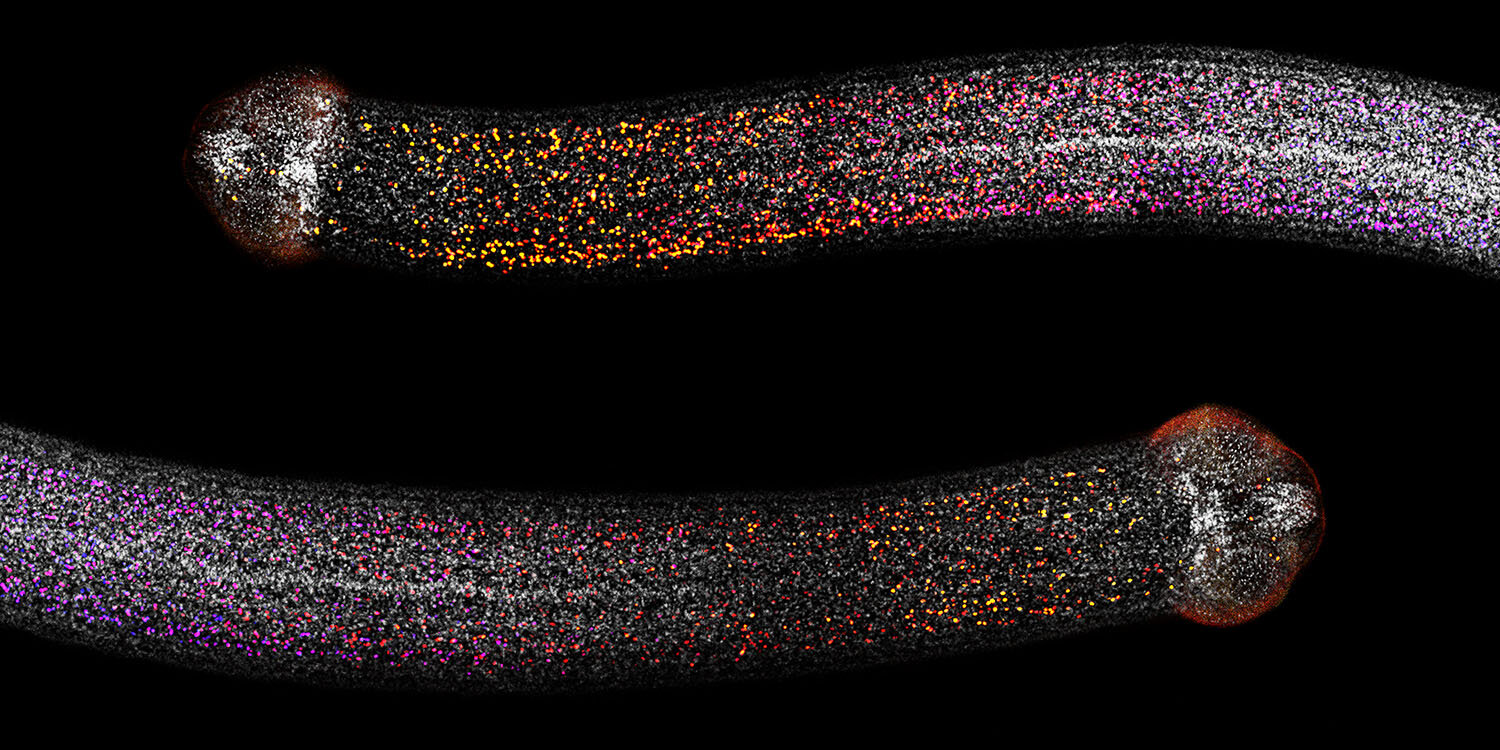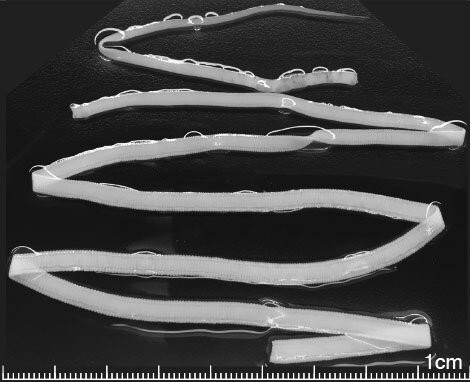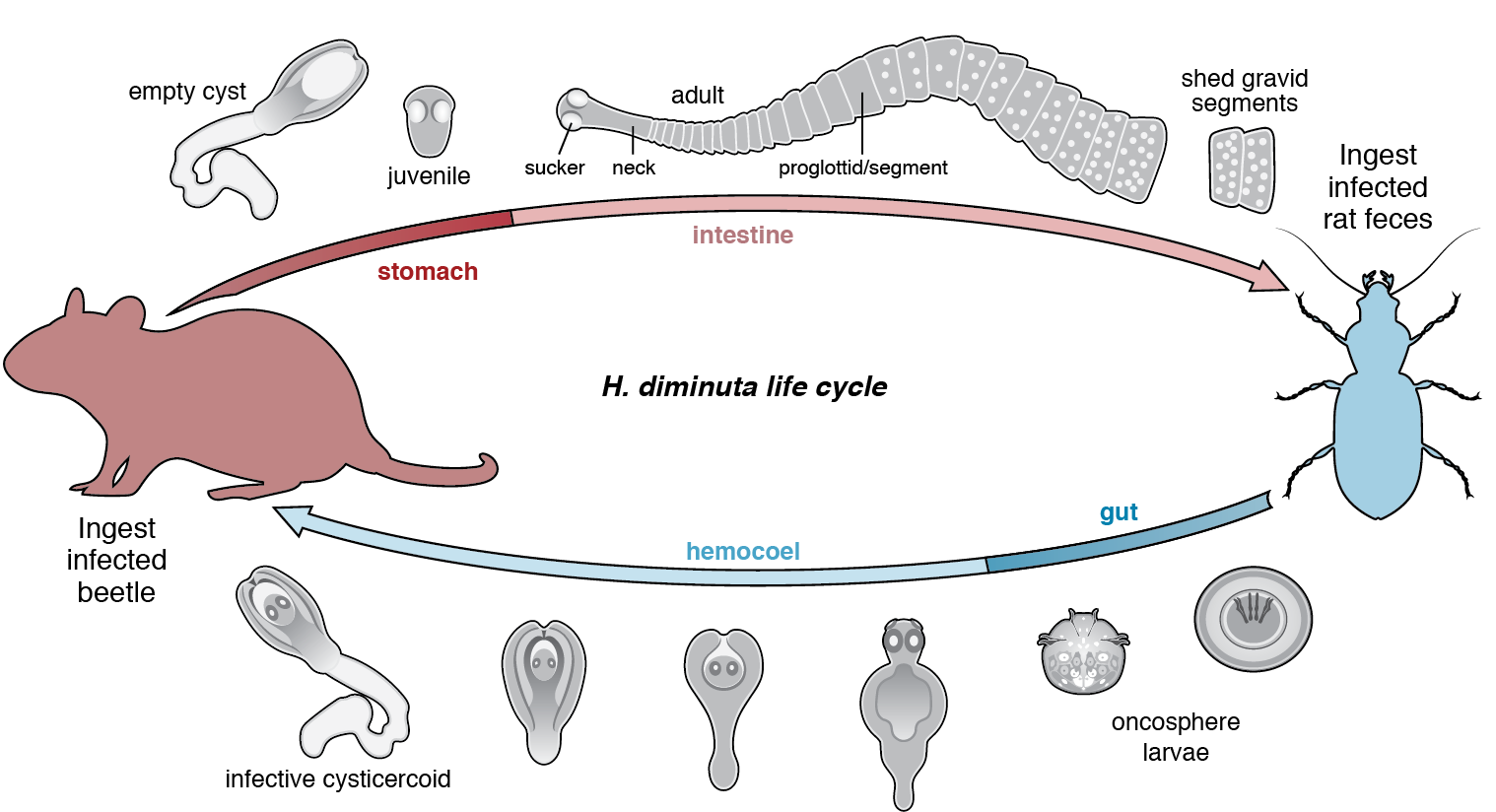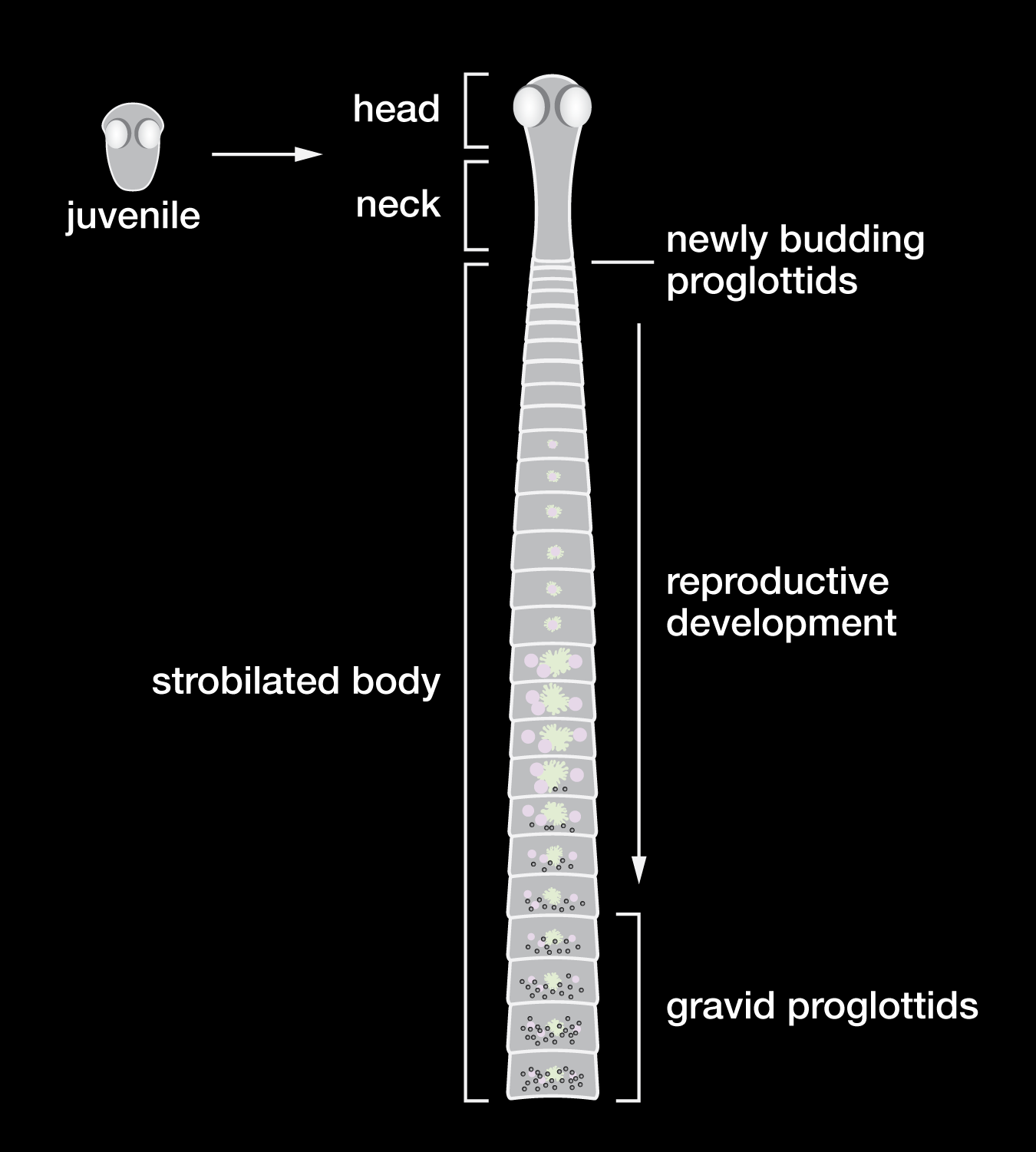
Stem cells and regeneration in the tapeworm Hymenolepis diminuta
A resurrected model
The rat tapeworm was a favorite study animal among parasitologists until the mid-20th century when it was left behind by the molecular biology revolution. We have established a host of modern molecular tools to reinvigorate Hymenolepis diminuta as a model organism to study the extraordinary physiology of these parasites. We are particularly interested in stem cell regulation of growth, regeneration, and reproduction.
H. diminuta life cycle
H. diminuta requires two hosts: rats and beetles. Beetles like the mealworm beetle, Tenebrio molitor, host larval stages of H. diminuta until they reach the infective cysticercoid stage. When cysts are fed to rats, the juvenile tapeworm emerges and takes up residence in the small intestine. A newly existed tapeworm is barely 0.2 mm in length but will reach an equilibrium length of 60 cm in the rat. The adults grow by adding hermaphroditic segments/proglottids that become increasingly mature toward the posterior ends, and cross-fertilize to become gravid. Through the process of apolysis, gravid proglottids are shed with the rat excrement where they can be consumed by a beetle to complete the life cycle
Growth and Regeneration
The adult tapeworm body plan consists of a head with a central rostellum and four suckers that are used to latch onto intestinal microvilli, an unsegmented region called the neck or germinative region, and a strobilated body made of thousands of segments/proglottids. The proglottids bud from the neck region which serves as a growth zone from which seemingly unlimited growth is possible. The neck is also the only region that can regenerate proglottids in a stem cell-dependent manner. However, stem cells are maintained throughout the whole body of the worm (regardless of regeneration-competence). Instead, microenvironmental signals in the head-neck region are necessary for regenerative ability. The identity of these signals remain unknown and elucidating them is an active area of research in our lab
Interested?
Tapeworms could be in your future! Excellent candidates are always welcome to contact us.


